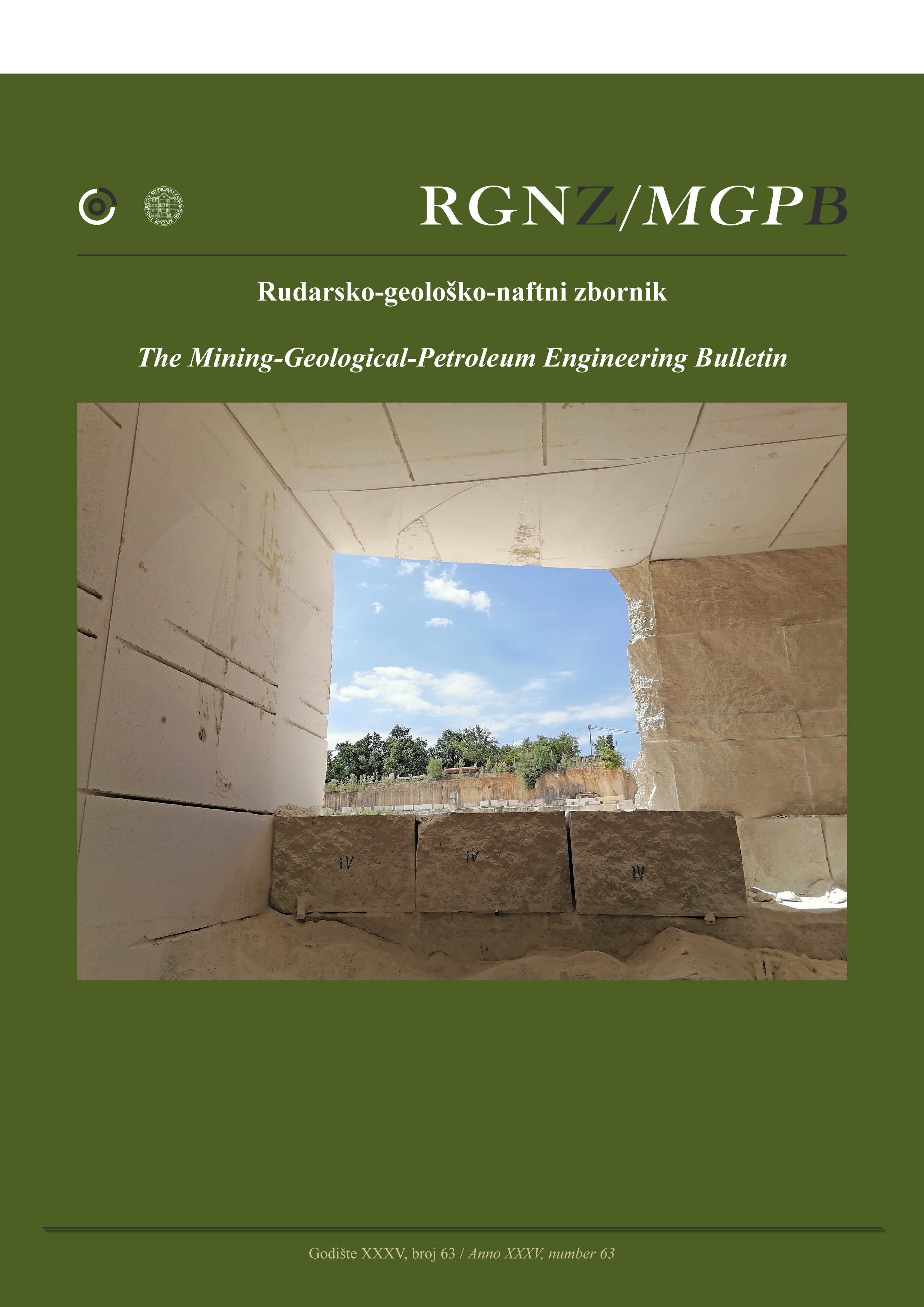The Effects of Water Content and Grain Size on the Clogging and Abrasivity of Fine-Grained Soils in Mechanized Excavation
DOI:
https://doi.org/10.17794/rgn.2023.2.4Keywords:
mechanized excavation, wear of cutting tools, clogging, clay, foamAbstract
Clogging during excavation is one of the common problems in mechanized excavation. Among the influential factors in clogging of the cutter head, we can mention the percentage of fine soil particles (under 200 mesh sieve), soil moisture, and soil type. In this study, to investigate the mechanism of tunnel excavation in the laboratory, a tunnel excavation machine laboratory simulator was designed and built. The features of this device are its horizontal operation, the low rotation speed of the cutter head, continuous contact of the pins with fresh soil during the test, and the continuous injection of additives with a specific injection pressure during the test. The effect of the percentage of fine-grained, soil moisture and the foam injection ratio (FIR) on clogging, energy consumed, and the average wear of cutting tools was studied. The results showed that with an increase in the percentage of fine soil particles from 90 to 100%, the clogging of cutting tools increased by 50%. Also, with an increase of soil moisture from a dry state to moisture content of 5%, clogging of the cutter head is insignificant, and after that, with an increase of moisture from 10 to 25%, clogging is increased by 178%, and the amount of energy consumed in each test is increased by 84%. In addition, by increasing the foam injection ratio from 40 to 60%, clogging decreased by 81% on average, and the wear of cutting tools decreased by 62% on average.
Downloads
Published
How to Cite
Issue
Section
License
Copyright (c) 2023 Erfan Khoshzaher, Hamid Chakeri, Mohammad Darbor, Hadi Shakeri

This work is licensed under a Creative Commons Attribution 4.0 International License.
Creative Commons-BY
Authors who publish with this journal agree to the following terms:
In agreeing this form, you certify that:
- You read the ethical codex of the RGN zbornik available at journal web.
- You submitted work is your original work, and has not previously been published and does not include any form of plagiarism.
- You own copyright in the submitted work, and are therefore permitted to assign the licence to publish to RGN zbornik.
- Your submitted work contains no violation of any existing copyright or other third party right or any material of an obscene, libellous or otherwise unlawful nature.
- You have obtained permission for and acknowledged the source of any illustrations, diagrams or other material included in the work of which you are not the copyright owner.
- You have taken due care to ensure the accuracy of the work, and that, to the best of your knowledge, there are no false statements made within it.
- All co-authors of this submitted work are aware of, and in agreement with, the terms of this licence and that the submitted manuscript has been approved by these authors.
Publication licence
You retain copyright in your submitted work, according to journal license policy (CC-BY). By signing this form you agree that RGN zbornik may publish it under the publication licence. In summary the licence allows the following:
Anyone is free:
- To copy, distribute, display, and perform the work.
- To make derivative works.
Under the following conditions:
- The original author must always be given credit.
- The work may not be used for commercial purposes.
- If the work is altered, transformed, or built upon, the resulting work may only be distributed under a licence identical to this one.
Exceptions to the licence
In addition to publishing the work printed under the above licence, RGN zbornik will also enable the work to be visible online.
The journal editorial can change the licence rules anytime but it cannot retroactively restrict author(s) rights.


